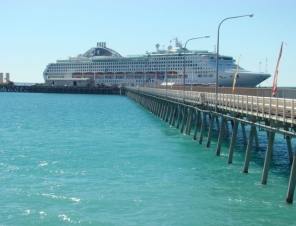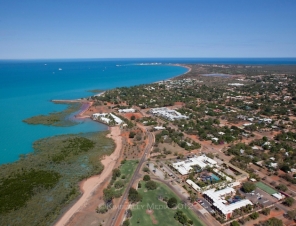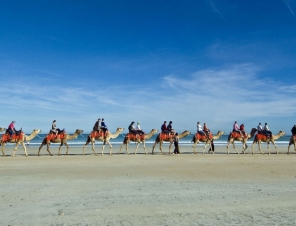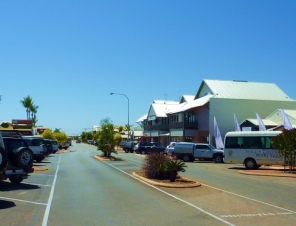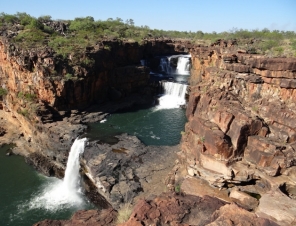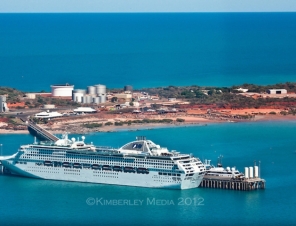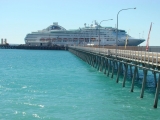Broome is situated on the traditional lands of the Yawuru aboriginal people. The first European to visit Broome is often mistakenly thought to be William Dampier, but in 1688 he only visited the north of what was later named the Dampier Peninsula. Then in 1699 he explored the coast from Shark Bay to La Grange Bay, from where he headed north leaving the Australian coast.
In 1879, Charles Harper suggested that the pearling industry could be served by a port closer to the pearling grounds and that Roebuck Bay would be suitable. In 1883, John Forrest chose the site for the town, and it was named after Sir Frederick Broome, the Governor of Western Australia from 1883 to 1889.
In 1889, a telegraph undersea cable was laid from Broome to Singapore, connecting to England. Hence the name Cable Beach given to the landfall site.
The town has an interesting history based around the exploits of the men and women who developed the pearling industry, starting with the harvesting of oysters for mother of pearl in the 1880s to the current major cultured pearl farming enterprises. The riches from the pearl beds did not come cheaply, and the town's Japanese cemetery is the resting place of 919 Japanese divers who lost their lives working in the industry. Many more were lost at sea, and the exact number of deaths is unknown.
The Japanese were only one of the major ethnic groups who flocked to Broome to work on the luggers or the shore based activities supporting the harvesting of oysters from the waters around Broome. They were specialist divers and, despite being considered enemies, became an indispensable part of the industry until World War II.
Each year Broome celebrates this fusion of different cultures in an annual cultural festival called Shinju Matsuri (Japanese for festival of the pearl) which celebrates the Asian influenced culture brought here by the pearling industry.
However, Broome was attacked at least four times by Japanese aircraft during the Second World War, and the worst attack was the 3 March 1942 air raid in which at least 88 people (mostly civilians) were killed.
The West Australian mining boom of the 1960s, as well as the growth of the tourism industry, also helped Broome develop and diversify and its is now one of the fastest growing towns in Australia.
At Gantheaume Point and 30 m (98 ft) out to sea are dinosaur footprints dated as Early Cretaceous in age (approximately 130 million years ago). The tracks can be seen only during very low tide. Plant fossils are also preserved extensively in the Broome Sandstone at Gantheaume Point and in coastal exposures further north.
Broome has a semi-arid climate and like most parts of the Australian tropics, it has two seasons: a dry season and a wet season. The dry season is from April through November with nearly every day clear and maximum temperatures around 30c (86f). The wet season extends from December through March, with maximum temperatures of around 35c (95f), rather erratic tropical downpours, and high humidity. Broome's annual rainfall average is 603.3 mm (23.75 in), 75% of which falls from January through March. Broome is susceptible to tropical cyclones, and these, along with the equally unpredictable nature of summer thunderstorms, play a large part in the erratic nature of the rainfall.
Where does the cruise ship stop?
The ship ties up at the jetty which is to the south west of the town.
How far from the cruise ship is the main town centre?
Its about 8.5 kilometers to the main part of town from the cruise ship wharf. The jetty out into the harbour is almost 800 metres long.

 |
|





